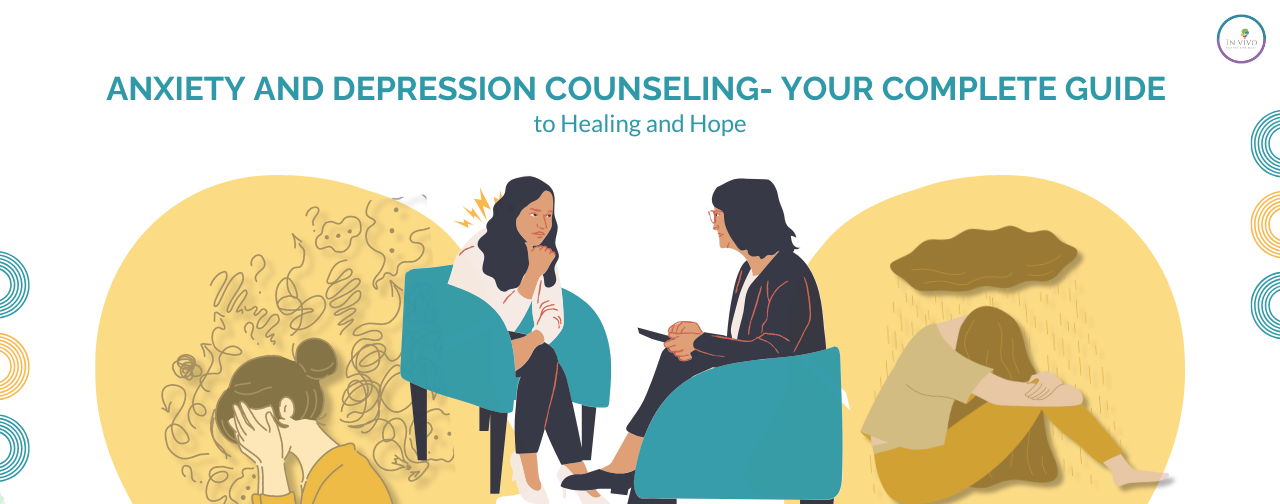
It’s Monday morning. The alarm clock rings, and Priya lies awake, dreading another work presentation. The memory of her last stumble on stage haunts her—her mind races with anxious thoughts, while a heaviness settles in her chest. For Priya and countless adults between 25 and 40, juggling careers, relationships, and self-expectations, this blend of anxiety and sadness is far more common than anyone likes to admit.
In fact, recent research shows that nearly 1 in 5 adults experience symptoms of anxiety or depression each year—rates highest among those navigating early adulthood and life transitions. Despite the prevalence, stigma and confusion often prevent people from seeking the help they need. Sharing stories helps reduce shame and fosters empathy, making the healing journey feel less lonely.
Anxiety is often a response to potential or perceived threats, making you feel uneasy about future situations that may or may not occur. This “anticipation anxiety” is a common experience for adults, especially around work, relationships, and major life changes. In contrast, depression surfaces after difficult situations have already happened. It’s more than a diagnosis—it’s an emotion that arises from failures, disappointments, or feelings of hopelessness.
Individuals aged 25-40 frequently navigate transitions, career pressures, and social expectations that can heighten vulnerability to both conditions. Sometimes, anxiety and depression intertwine, creating a cycle that can feel overwhelming.
Usually, anxiety is the anticipation of a situation—something that may or may not happen in the future. Our minds often end up overthinking or imagining the worst-case scenarios. Depression, on the other hand, is an emotion marked by feelings of helplessness, hopelessness, or a sense of loss, failure, or pity towards oneself or the world. Depression is often experienced after a difficult situation or adversity has occurred.
For some people, emotional disturbance can be more complex, depending on their circumstances. It is possible to feel both depressed and anxious at the same time. For example, a professional may have stage fright or performance anxiety about failing during a presentation. If this anxiety comes true—where they are unable to impress the client or freeze during their performance—they are likely to feel depressed about the outcome and, at the same time, be anxious about whether it will happen again. This can continue in a loop, making it increasingly difficult to overcome anxiety for the next performance.
It is important to identify our emotions, thoughts, and behaviors. Our thoughts play a vital role in regulating our emotions and translating them into our actions. In the previous example, with professional help, a person can work on their anxiety by taking even the first step toward improvement. Situations become adversities or big problems because we attach meanings to them. Unknowingly, we tend to place strong, rigid demands on ourselves, such as “I should be perfect,” “I should perform well,” or “I should not fail.” If I fail at one presentation, I think, “I’m a failure.” We reinforce these extreme thoughts, which leads to feeling sad or depressed about ourselves and prevents a positive outcome.
Being flexible and tolerant towards ourselves can help us break the loop of feeling both anxious and depressed, allowing us to work on ourselves in a much healthier way.
Even though anxiety and depression are distinct emotions, they often overlap—sometimes causing confusion. A lack of awareness about the differences may lead someone to label all negative emotions as “sadness”. For example, after a disappointing business presentation, feelings of failure and hopelessness may evolve into anxiety about future performances. This emotional cycle is especially pronounced among young professionals and adults facing social or career pressures.
Therapy is not just a space to talk—it’s a proven intervention with real-life impact. Modalities like Rational Emotive Behaviour Therapy (REBT) treat anxiety and depression as emotions, not labels. Counseling focuses on layers such as:
Other evidence-based approaches like Cognitive Behavioural Therapy (CBT), Acceptance & Commitment Therapy (ACT), Narrative Therapy, and Mindfulness-Based CBT offer targeted strategies:
At In Vivo, our counselors integrate REBT with complementary therapies, tailoring interventions for adults navigating modern stressors. The focus is always on empowering individuals to understand and manage emotional hurdles, building sustainable coping strategies through collaborative work.
About Author –

Tanvi Haria –
Counseling Psychologist | Psychotherapist
‘In Vivo’ was started in 2007 with the aim of making people aware – in their minds and in action – that they themselves have the ability and the power to make a ‘Proactive Choice’ to take …Read More

Copyright © 2024 In Vivo Mumbai Centre For REBT All rights reserved